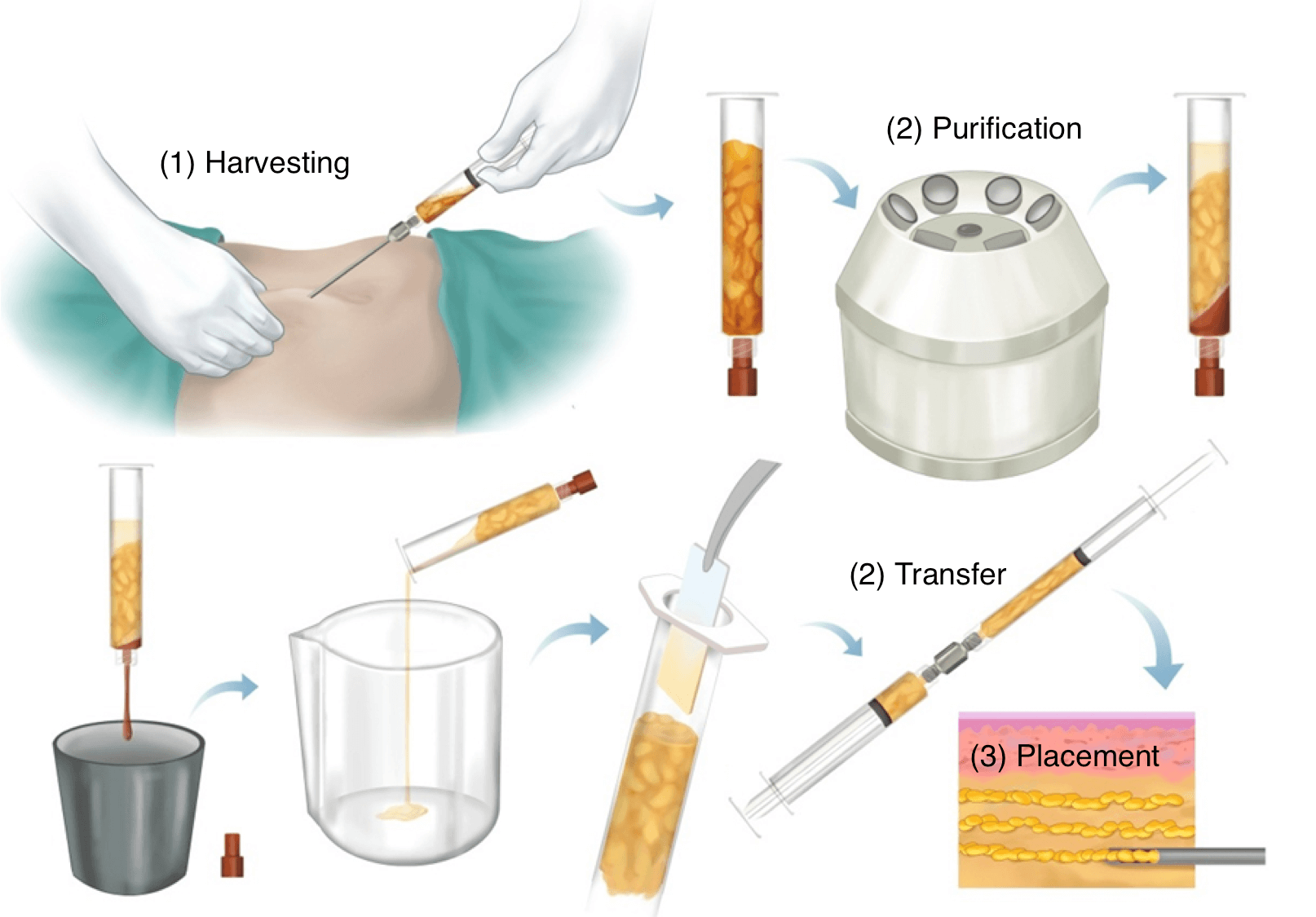Patients always ask me how fat grafting works and how long it lasts. It is a great question because fat grafting has become more common over the past few years, with it being used in facial rejuvenation, hand rejuvenation, breast augmentation, buttock enhancement, and other areas for volume restoration.
HOW IT IS DONE
Fat grafting is mostly about fat relocation, taking fat from areas we don’t want and relocating it into areas we want to enhance volume. But although this concept is relatively easy to understand, the actual procedure has taken plastic surgeons many years to develop. Even now, we are always constantly improving on the different methods to increase the survivability of fat cells in the newly grafted area.
Fat grafting can be explained as a three-step process: (1) harvesting, (2) purification and transfer, and (3) placement.

Harvesting: Fat is collected from the donor site using a cannula connected to a syringe. The most common location to harvest fat is the tummy, but we can also choose from other potential sites, such as the thighs, the love handles, and even the back of the arms.
Purification and transfer: The fluid obtained during liposuction is then treated to remove excess fluid from damaged fat cells so that the fat left is concentrated and ready to be injected. The prepared fat is then loaded into syringes for injection.
Placement: The last step would be to inject the fat cells into their new home using small fat grafting cannulas that would not damage the fat cells. The fat is injected into many tunnels and layers. We want the fat to be widely dispersed in the tissue and not to collect in one single area. If the fat does not receive blood supply within a short period of time, it will die and can become scar tissue. That’s why your choice of plastic surgeon must have great experience and technique.

HOW LONG DOES IT LAST
When the transfer fat cells successfully survive in their new location, they stay there forever, just like the fat tissue that is naturally present there. However, the fat tissues are also subjected to natural factors such as weight fluctuations and continued aging.
IMPORTANCE OF FINDING THE RIGHT PLASTIC SURGEON
The success rate of fat grafting is highly dependent on these 4 things:
- Technique of collecting fat cells that will keep them alive.
- Technique of processing the fat cells that will remove the unnecessary elements.
- Technique of injecting the cell that will optimize fat graft survival.
- Care of fat cells after fat grafting.
All these 4 factors are vital for long-lasting and beautiful results. And it mostly boils down to the technique of your plastic surgeon. Hence, I always urge patients to look for an accredited plastic surgeon who has a vast amount of experience dealing with liposuction and fat transfer on a regular basis. They are the ones who are meticulous with their surgical technique and practice in a safe facility. Of course, the patient must also ensure graft survival through lifestyle changes. They should avoid smoking, wear compression garments, and maintain appropriate sleeping positions. Your plastic surgeon will discuss all these during the consultation.
In Singapore, plastic surgeons must be accredited by the Ministry of Health Singapore. Check here: https://bit.ly/1smGHDq
To learn more about fat grafting, do contact us at:
Dr Marco Faria-Correa Plastic Surgery
Tel: +65 64648075
E-mail: enquiry@drmarco.com
Web: www.drmarco.com
Disclaimer: The information contained in this post is neither intended nor implied to be a substitute for professional medical advice. It is provided for educational purposes only. Always seek the advice of your plastic surgeon or other qualified healthcare provider before starting any new treatment or discontinuing an existing treatment. Always speak to your healthcare provider about any questions you may have regarding a procedure.

